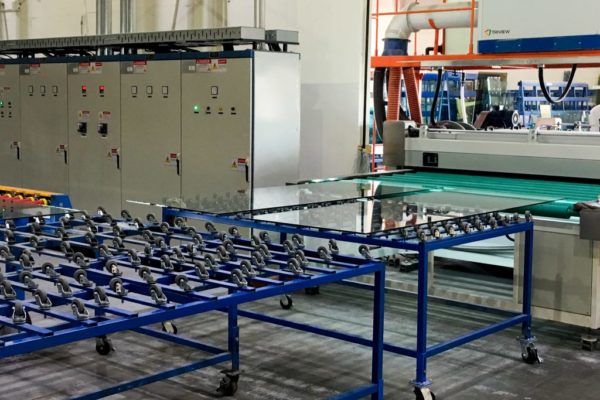Researchers at Germany’s Fraunhofer Institute for Solar Energy Systems ISE and the Potsdam Institute for Climate Impact Research (PIK) have tried to estimate how much float glass the PV industry may need to help the world reach the terawatts of installed solar capacity that will be necessary to reach climate goals and limit global warming to 1.5 C.
The scientists outlined two different scenarios: a conservative one predicting that the world’s cumulative PV capacity will reach 20 TW by 2050 and 80 TW by 2100, and a more optimistic scenario envisaging that global PV capacity will reach 80 TW by 2050 and 170 TW by 2101.
For both scenarios, they considered a maximum CO2 budget of 600 billion tons of carbon dioxide for the 2011-2100 period.
“The two scenarios span a plausible range of values for parameters describing the price learning curve of PV, the size of system integration challenges, the upscaling dynamics of carbon capture and sequestration (CCS), and the development of electrification of end-use demands,” they explained.
Depending on the two scenarios, the German group predicts that demand for solar glass could be met by an annual output of between 1,000 km2 and 1,300 km2 in 2020 and between 12,000 km2 and 22,000 km2 by 2100. The scientists assumed solar module efficiency at a learning rate of 6.7%, starting from a module efficiency of 20% in 2020.
“Looking at the total area of the active PV capacity, the values increase from 4,200 to 4,600 km2 in 2020 to 252,000 to 466,000 km2 by 2100,” the group said. “To put this in perspective, the values for 2100 correspond roughly to the land area of the U.K. or Sweden, respectively.”

The researchers expect bifacial glass-glass modules to see their share increase in the upcoming decades and the reduction of glass thickness from 3 mm to 2 mm could help to meet the huge demand triggered by this trend.
“A fully double glass-based PV production will require amounts of float-glass exceeding today’s overall annual glass production of 84 Mt as early as 2034 for Scenario 2 and in 2074 for Scenario 1,” they said. “In 2100, glass consumption would reach 122 Mt to 215 Mt.”
Available sand reserves for glass manufacturing do not represent an issue for future glass supply, the academics explained, but the PV and glass industries will have to expand capacities over the coming decades in order to avoid bottlenecks and reduce costs. More importantly, PV module efficiencies will have to improve significantly and reach 24.1% and 25.9% by 2030 for Scenario 1 and Scenario 2.
“This roadmap foresees solar cell efficiencies in the range of 25% for leading products of both n- and p-type products of monocrystalline Si-PV,” they added, noting that no specific technological learning is expected for solar glass.
Emerging technologies such as perovskite solar cells and other cell technologies with efficiencies above 25%, if made commercially mature by the industry, might help to considerably reduce the amount of solar glass needed for the current century.
“Just recently, major commercialization efforts have been announced for thin double glass perovskite module, which would reduce glass demand by an order of magnitude,” the German team said, referring to a roll-to-roll printing technique of perovskite PV on glass developed by New York-based startup Energy Materials Corp.
The scientists presented their findings in “Technological learning for resource efficient terawatt scale photovoltaics,” which was recently published in Energy & Environmental Science. The study also analyzes silver and indium demand, the projected costs of PV, and the greenhouse gas emissions of the solar industry.
This content is protected by copyright and may not be reused. If you want to cooperate with us and would like to reuse some of our content, please contact: editors@pv-magazine.com.









By submitting this form you agree to pv magazine using your data for the purposes of publishing your comment.
Your personal data will only be disclosed or otherwise transmitted to third parties for the purposes of spam filtering or if this is necessary for technical maintenance of the website. Any other transfer to third parties will not take place unless this is justified on the basis of applicable data protection regulations or if pv magazine is legally obliged to do so.
You may revoke this consent at any time with effect for the future, in which case your personal data will be deleted immediately. Otherwise, your data will be deleted if pv magazine has processed your request or the purpose of data storage is fulfilled.
Further information on data privacy can be found in our Data Protection Policy.